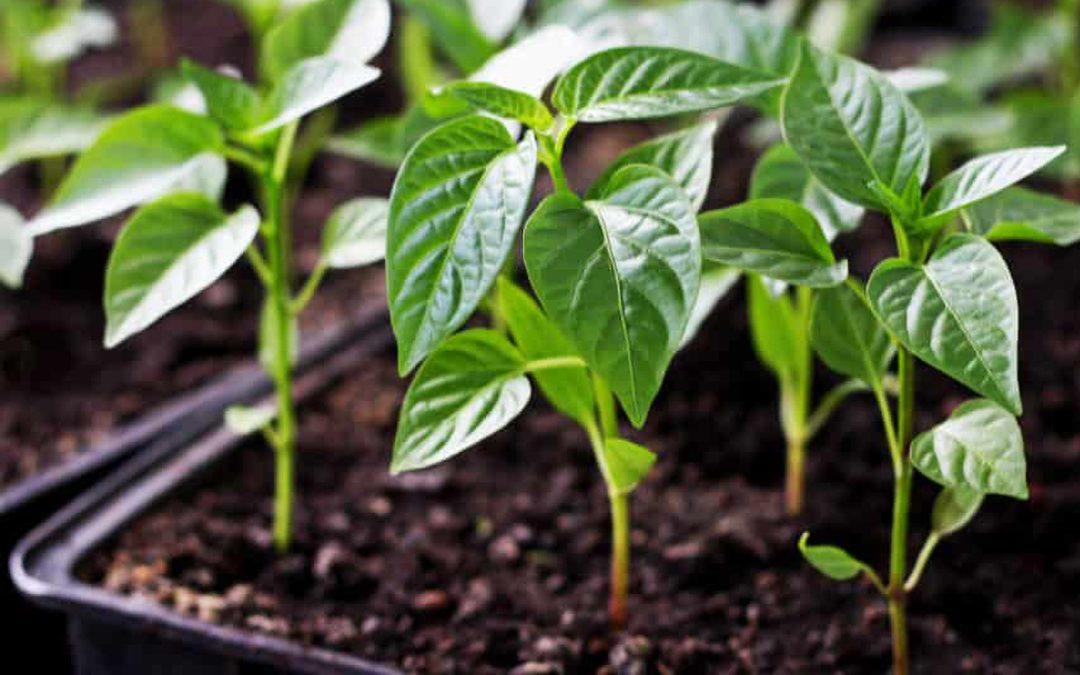
Hot Pepper Growing Know How
As with many vegetable types, there are 100’s of hot peppers to choose from. From lava hot ‘Carolina Reaper’ to just a touch of heat ‘Paprika’. And their colors and shapes vary as much as their heat.
All ‘hot’ peppers have two things in common:
- The amount of capsaicin they produce determines the ‘heat’ we feel and the SHU number they are assigned. The higher the number, the hotter the pepper.
- Peppers are long season, heat loving plants. They struggle to produce fruit in cold damp climates with less than 100 days of warm weather.
 |
But don’t be discouraged by what may first appear to be finicky plants. Once established, you can sit back and enjoy the fruits of your labor the entire winter season. Some are even nice as decorative house plants (just keep them away from children and pets). |
Starting from seed gives you the largest assortment of varieties to choose from. Even specialty garden centers may only offer 10 varieties. Growing from seed is the way to go. Be aware! The seeds of very hot peppers are hot too! Wear gloves and a mask when handling them and wash your hands as soon as you are finished!
Hot pepper seeds can take up to 4 even 6 weeks to germinate, so it’s best to start them indoors early (12 weeks before your last expected spring frost); often in February so they’ll have enough time to produce fruit. Start with clean trays to hold the soil, water and seed without making a mess of your counters. Trays should be at least 2” deep, with drainage and a reservoir to hold drained water. There are many good quality trays designed for this. Fill the trays with moistened ‘seed starting soil’, not garden soil from your yard. If using a seed starting tray, place one or two seeds in each cell and gently push the seed into the soil with the tip of a pencil, toothpick or chopstick to just below the soil surface. Lightly cover the seeds and water the entire tray allowing it to drain. You can cover the tray with a greenhouse top, Remay type floating cover, or wet paper towels. These all help keep the soil evenly moist between waterings. Place the entire tray on a heat mat. For hot peppers this is very important. Peppers germinate best in soil that is between 75° and 85°. Since the seeds don’t need light until they germinate, the tray can be placed in the basement on top of a hot-water heater as an alternative. Check for germination every day and water when needed. As soon as the little green shoots appear, remove any cover. At this point the seedlings need to be moved to sunlight. Pepper seedlings need 12-16 hours of sun to thrive, this is when a ‘grow light’ is helpful. Place the seedling 3-4” below the lights and set a timer so they have 16 hours of light each day. As the seedlings grow, the lights will have to be adjusted to remain 3-4” above the plants. When the seedlings reach 3” tall and have 2 or more sets of true leaves, it’s time to transplant them into separate containers. Cow Pots are perfect for this. Use the same seed starting soil and gently move each seedling into its own pot. Place the transplants back under the lights. Now is also the time to start feeding your young plants. Any good quality water soluble fertilizer will do, just use ½ the recommended dilution. Continue to water the plants as needed and fertilize every other week. It’s time to transplant outside into your garden when the night time temperature has not gone below 55° for 2 weeks. For Southern New England, that’s usually mid-June. Let the plants get accustomed to the being outside slowly; hardening them off over a period of days. Pepper plants continue to like hot temperatures so choose a place with full sun and protected from high winds. Dig a hole the depth of the pot and fill the hole with water. If you are using Cow Pots, place the entire pot in the hole and move the soil around to fill the remaining hole. Water deeply.
Continue to water your plants as needed and fertilize every other week. A bi-weekly foliar application of Epsom Salt and water (2T Epsom salt to 1 quart of warm water) will give your plants a boost of magnesium sulfate. Few insects or other pests bother hot pepper peppers, but some critters do like the foliage. Insects can be controlled with an insecticidal soap. Using tomato cages can help keep deer away. Planting nasturtiums flowers, dill and garlic near peppers can attract beneficial insects to help control some pests.
If your pepper plants are dropping blossoms, the soil may have too much nitrogen. Water deeply for a few days and then add a 5-10-5 fertilizer to help balance the nutrients.
Harvest at all stages of maturity. Many dry well and others are perfect for jelly or relish.
Hint: When pepper plants are stressed, they produce more capsaicin and become hotter. Holding off some watering will often stress the plants. Too much water can do the same. That’s why some years the same variety grown in the same garden can be milder or hotter.
Left over pepper seeds keep very well for many years if they are kept cool (not frozen), dry and dark. Store extra seed in their original packets, place them in a canning jar with a dehydrating packet and place the jar in a cool dark place until next spring. A basement is often fine. Freezing any seed for a prolong period of time can kill the tiny embryo inside the seed coat.
